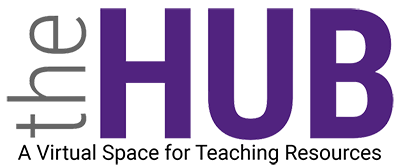Prompt Engineering Basics: https://lnkd.in/e3Ww6pDz ChatGPT Prompts Mastery: https://lnkd.in/eKzysUbR Intro to Generative AI: https://lnkd.in/eFP9u3xW AI Introduction…
Purpose
Jigsaw is a cooperative learning technique developed by Elliot Aronson (1978) in which
students leave their teams to work in expert groups to gather specifi c information or
complete a portion of a task. It allows teams to divide a larger task or topic into smaller
pieces so they can get more done in the same amount of time. It also lets students delve
more deeply into one topic, and then reap the benefi ts of teaching their teammates
about it.
Breaking It Down
■ In Jigsaw, team members are divided among several expert
groups, each assigned to a different topic.
■ All #1s work on the same project, all #2s on another,
#3s on yet another, etc. Instead of creating an additional
expert group, distribute any fi fth members of teams among
existing groups.
■ After completing work in their expert groups, the students return to their team
and teach their teammates what they have learned.
■ By the end of class, each team member will have learned about all the topics.
Fine-Tuning the Technique
■ Be sure to review expectations with the whole class before teams split into
expert groups. It is critical that the students understand what they are to do
in their groups and what they will be expected to teach their teammates when
they return to their teams. Write a key question or task on the board, a piece of
chart paper, a transparency, or an expert page as a visual reminder to keep the
students on task.
■ Don’t leave the sharing of information to chance after the students return to
their teams. Provide a form where the students can record information from the
different expert groups, or require them to answer questions that call for input
from each team member. Ideally, these questions should not simply restate one
or more questions from each expert group, but ask new questions that require
the students to synthesize the information through team discussion.
■ In One-to-One conferences, ask team members to describe two things they
learned from their partners. This helps remind students that they must
listen carefully to their partners, and that their partners are also depending
on them to provide good information. Award team cooperation points for
active listening.
■ Pacing is key when you are using Jigsaw. Allow adequate time for both expert
groups and teams to complete their parts of this technique. If time is short,
you might need to modify the task—for instance, by limiting the number of
questions you ask the students to research.
■ Vary the task to match your instructional goals and the abilities or interests of
your students. One possibility is to have all students read the same text, with
each expert group looking at it from a different perspective. This facilitates team
discussion, as everyone is working from the same information and can challenge
or support each other’s opinions based on what they have read. Another option
is to have expert groups review different texts—for example, texts written at
different reading levels, addressing different aspects of a common topic, or
introducing different (but related) topics. This option allows you to individualize
instruction, but it also requires more planning and coordination.
■ In general, assign students to expert groups at random using Numbered Heads.
Assign partners within the expert groups, so each student has someone with
whom to share knowledge and resources.
■ If you choose to have each expert group working with different materials
(for example, texts at different reading levels), decide ahead of time how you
will determine expert groups. Will you assign students based on your own
assessment of their abilities or interests? Will you allow the students to select
what they want to work on? How much instructional time will this take? Is it
important that each team sends a representative to one of the groups? If so,
how will you make sure this happens? Plan the logistics before class begins, to
minimize any disruption.
■ Test the students only on what they have directly studied! Never assess the
students on a text they have not read or a task they have not had the opportunity
to do. This is primarily a concern when expert groups are working with
different readings or activities, as students’ only access to some of the material
would come through the reports of their teammates. One easy solution is to
use the same set of guiding questions for each expert group and to structure
assessments along similar lines. This allows the students to draw chiefl y on their
own direct knowledge, while still incorporating relevant information gathered
from other expert groups.
■ Set up a station with the materials from each of the expert groups, so students
who wish to learn more about any of the topics can investigate on their own or
with their partners.

This Post Has 0 Comments